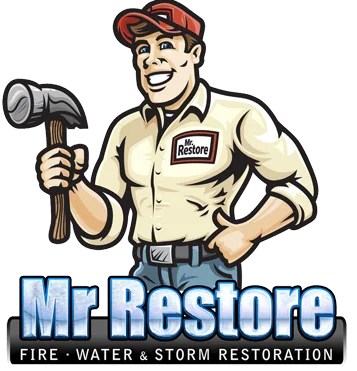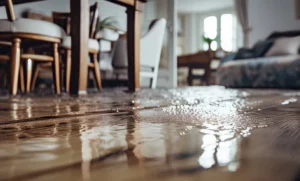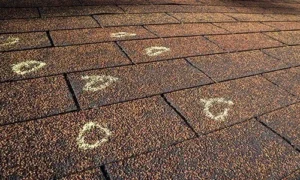When water damage strikes your home or business, the impact on wooden structures and furniture can be particularly devastating. Wood is naturally absorbent, which means it can easily retain water, leading to warping, staining, and even structural damage. Whether it’s a burst pipe, flood, or an appliance leak, understanding how to address and repair water damage to wood is crucial. This guide offers a people-centric approach to restoring wooden elements in both residential and commercial properties, helping property owners navigate the aftermath of water incidents effectively.
Immediate Response: First Steps After Water Damage
The first 24 to 48 hours after experiencing water damage are critical in determining the extent of damage and the success of restoration efforts. Here’s what you should do immediately:
1. Safety First
Ensure the area is safe to enter. Check for electrical hazards and structural damage that might make the area unsafe.
2. Remove Excess Water
If feasible, remove any standing water using pumps or vacuums. The quicker you can dry out the premises, the better your chances of minimizing damage.
3. Ventilation
Open windows and doors to allow air to circulate and speed up the drying process. Use fans and dehumidifiers to help remove moisture from the air and wood.
4. Document the Damage
Take photos and videos of the damage for insurance purposes. Having a detailed record can help streamline the claims process and validate your loss.
Assessing the Damage
Once the immediate response is handled, it’s important to assess the extent of the damage. This will determine the type of repair strategy needed and whether professional help is required.
1. Surface Level vs. Deep Damage
Surface water damage may involve some swelling and discoloration, which can often be remedied with drying and refinishing. Deep water damage, where water has penetrated into the core of the wood, may require more extensive repairs or replacement.
2. Check for Mold and Mildew
Wooden structures and furniture are prone to mold and mildew growth after being soaked. Inspect for any signs of mold, which will need to be addressed immediately to prevent health hazards and further damage.
Professional vs. DIY Repairs
Determining whether to hire professionals or undertake the repair work yourself is a critical decision that should be based on the severity of the damage, your skills, and the value of the damaged items.
1. Professional Restoration
For extensive damage, especially when structural safety is a concern, professional restoration services are recommended. Professionals have the tools, techniques, and expertise to restore wooden structures and furniture safely and effectively.
2. DIY Repairs
For minor damage, such as a swollen wooden door or slight warping of furniture, DIY approaches can be effective. This might include techniques like gently drying the wood, using clamps to reshape warped areas, or sanding and refinishing.
Repair Techniques for Wooden Furniture and Structures
The approach to repairing water-damaged wood varies based on the type and extent of damage:
1. Drying and Dehumidifying
Slow and controlled drying is key to preventing further warping or cracking. Use dehumidifiers and fans to regulate the moisture levels in the air and help the wood dry evenly.
2. Cleaning and Mold Removal
Use gentle, non-abrasive cleaners to clean the surface of the wood. If mold is present, a mixture of water and vinegar can help remove it. Be sure to wear protective gear to avoid inhaling spores.
3. Sanding and Refinishing
Once the wood is dry and clean, sanding can help remove stains and prepare the surface for refinishing. Apply a sealant or finish to protect the wood from future damage.
Prevention: Safeguarding Against Future Water Damage
Preventative measures can help mitigate the risk of future water damage:
1. Regular Maintenance
Regularly inspect and maintain plumbing and appliances to prevent leaks. Check roofs, windows, and doors for signs of wear and potential entry points for water.
2. Use of Water-Resistant Materials
When possible, choose water-resistant materials for areas prone to moisture. Sealants can also be applied to existing wood to provide a layer of protection against water.
3. Flood Sensors
Installing flood sensors in high-risk areas can alert you to the presence of water before damage becomes extensive.
Conclusion
Repairing water damage in wooden structures and furniture requires a thoughtful approach that balances immediate action with thorough restoration. Whether you choose to handle repairs yourself or enlist professional help, understanding the principles of wood care and moisture management will help you restore beauty and functionality to your water-damaged items, while also preparing you to protect your property against future incidents.






